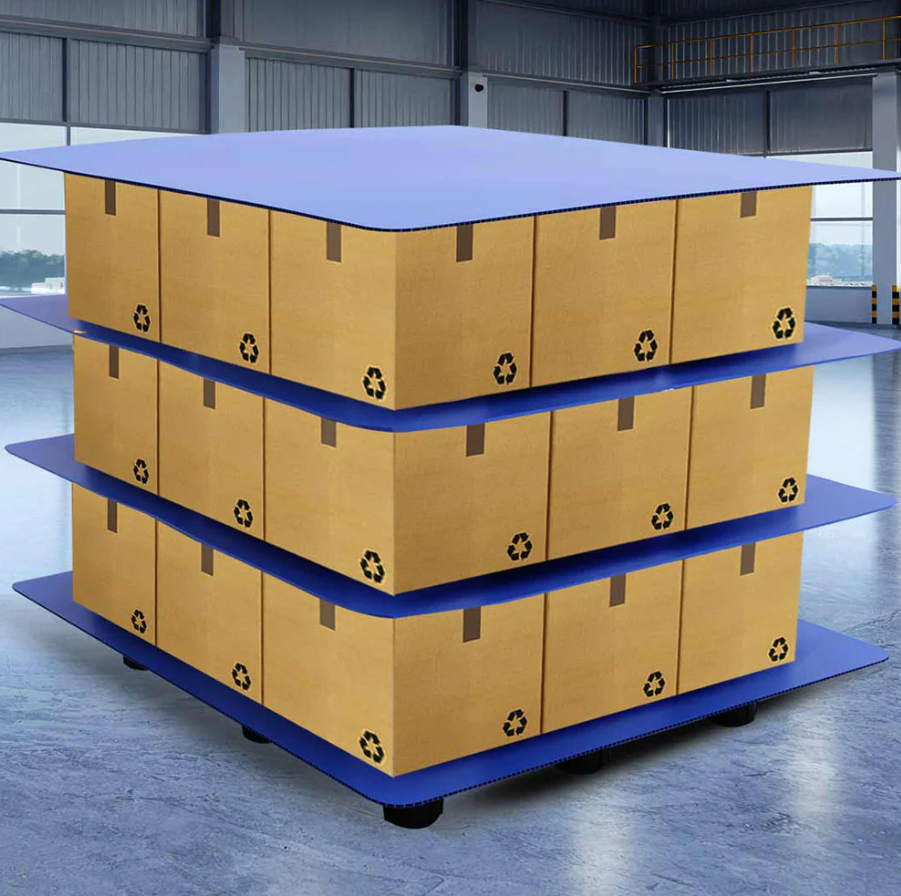
In the world of industrial logistics, manufacturing, and shipping, it's often the simplest components that play the most crucial roles. One such component, often overlooked but deeply embedded in efficient packaging practices, is partition sheets. Though they may not draw attention like high-tech machinery or advanced tracking systems, partition sheets serve as an essential part of packaging solutions across industries.
From protecting delicate items during transport to optimizing storage space and enhancing overall product safety, partition sheets contribute significantly to the efficiency and sustainability of modern packaging systems. This article explores their uses, benefits, materials, and how they align with evolving industry needs, especially in the context of sustainability and reusable packaging trends.
What Are Partition Sheets?
Partition sheets are flat sheets or structured inserts placed inside packaging containers or boxes to separate and protect individual items. These sheets act as barriers that prevent movement, reduce friction between products, and absorb shock or pressure during transit. Available in a range of materials, partition sheets are used to maintain order and integrity within bulk packaging.
While most people are familiar with simple cardboard dividers used in wine boxes or electronics, industrial-grade partition sheets are often made from more durable materials like polypropylene, corrugated plastic, or even engineered paperboard to withstand harsher conditions.
Where Are Partition Sheets Used?
Partition sheets find their application in a wide array of sectors:
Automotive industry: Used for separating metal or plastic parts to prevent scratches or damages.
Pharmaceuticals: Ensures safe transport of vials, bottles, and fragile medical components.
FMCG and consumer goods: Helps organize and protect a large volume of identical or mixed items.
Textile and yarn industries: Prevents tangling and contamination of fine materials.
Electronics: Protects sensitive components from electrostatic discharge or mechanical damage.
Even within a warehouse or production unit, partition sheets can be used for organizing goods on shelves or during in-house transfer between departments.
Types of Partition Sheets
Partition sheets are not a one-size-fits-all solution. They can be broadly categorized based on material and design:
1. Corrugated Paperboard Sheets
These are the traditional choice for partitioning lighter products. They are cost-effective, recyclable, and suitable for one-time use.
2. Plastic Partition Sheets
Made from polypropylene or HDPE, these sheets are ideal for reusable or long-term packaging. They offer high durability, moisture resistance, and can withstand harsh handling.
3. Foam or Padded Inserts
Used for items that need shock absorption, such as glassware or delicate electronics.
4. Die-cut or Slotted Partitions
These are customized designs that allow sheets to interlock and form a grid-like structure within boxes for vertical and horizontal separation.
Each type is chosen based on the nature of the product, fragility, weight, and transport conditions.
Benefits of Using Partition Sheets
Partition sheets are a fundamental packaging accessory that add value in several ways:
1. Product Protection
The primary purpose of partition sheets is to prevent movement and contact between products during transport. This reduces the risk of damage, thereby decreasing return rates and losses.
2. Organized Packing
They enable efficient space utilization by dividing a container into equal sections, which not only organizes the packing process but also helps in quick inventory assessment.
3. Enhanced Stacking Strength
In bulk packaging, especially in vertical stacking, partition sheets add an additional layer of support, which helps maintain the structural integrity of the outer packaging.
4. Reusability and Sustainability
Modern partition sheets, particularly those made from engineered plastics, are designed to be reusable. This aligns well with companies looking to reduce packaging waste and move toward greener supply chains.
5. Customizability
Partition sheets can be cut, printed, or engineered to meet specific dimensions or branding requirements, making them a flexible tool for customized packaging solutions.
Partition Sheets and Sustainable Packaging Trends
In recent years, sustainability has become a core priority in packaging design. Traditional materials such as thermocol or single-use plastic are being replaced with recyclable or reusable alternatives.
Partition sheets made from recyclable plastic or corrugated board offer an excellent option for companies seeking environmentally responsible packaging. They reduce the need for excess void-fill materials like bubble wrap or foam peanuts, and because they're often reusable, they significantly cut down on material waste.
Furthermore, industries are adopting closed-loop packaging systems where partition sheets are returned, cleaned, and reused, especially within returnable transit packaging solutions. This not only minimizes environmental impact but also reduces operational costs over time.
Key Considerations When Choosing Partition Sheets
To ensure optimal results, businesses should consider the following when choosing partition sheets:
Material Strength: For heavy items, a thicker or reinforced sheet is necessary.
Moisture Resistance: Important for perishable goods or humid environments.
Customization Needs: Size, shape, and branding can influence material choice and cost.
Reusability Goals: Reusable materials might have a higher upfront cost but are economical in the long run.
Compliance: For food or medical packaging, sheets must comply with hygiene and safety regulations.
Conclusion
While partition sheets may not be the most visible aspect of packaging, their role is undeniably vital in ensuring safety, efficiency, and sustainability. From protecting delicate goods to enhancing storage logistics, they serve as an essential part of modern industrial and commercial packaging ecosystems.
As industries increasingly move towards greener and smarter supply chains, materials like partition sheets that offer protection, structure, and environmental value will continue to be indispensable. Whether your needs are short-term and disposable or geared toward long-term reuse, partition sheets provide a solid foundation—literally and figuratively—for reliable packaging.




















Write a comment ...